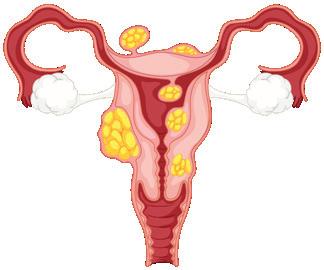CLICK HERETO VIEW





BELLVILLE
Dr N Mtimkulu
Dr MS Jacobs
Dr M Magopa
021 950 8930 021 945 2970
Dr T Isaacs 021 945 3483 021 110 5070
Dr G Khobane
Dr T Masina
Dr O Orji
Dr N Maseko 021 110 5157
Dr Z Dunn 021 110 5059 021 110 5064
TOKAI
Dr A Hendricks 021 712 2691
Dr T Motsema 021 110 5940
Dr M Tisane 021 023 2046
GATESVILLE
Dr N Allie 021 637 4323
Dr R Kader 021 638 2647
Dr S Camroodien 021 110 5930
RICHARDS BAY
Dr J Moodley
Dr MN Nkanyane
021 391 4132/3 021 110 5945 035 772 1581 035 791 5506
Dr S Bodasing 035 791 5438
Dr M Tshimanga 035 791 5446
GATESVILLE & MITCHELLS PLAIN
Dr A Davids, Dr MA Jeeva & Dr H Khamissa
GATESVILLE: 021 637 1343/4
MITCHELLS PLAIN: 021 392 8141/0516
For more information contact us at info@melomed.co.za
Breastfed babies are tops
Returning to work after maternity leave: New mom's guide
Fibroids and pregnancy: What women need to know
Understanding newborn jaundice - Why is my baby yellow?
Managing heartburn during pregnancy


Can breastfeeding your child really have any lasting benefit?
A UK study explored the impact of breastfeeding on social mobility by comparing fathers' and children's jobs.
• The study followed children born in 1958 and 1970, assessing breastfeeding status reported by mothers and social class 30 years later.
• Results showed breastfeeding was linked to a higher likelihood of upward mobility (better job than father) and lower likelihood of downward mobility (worse job than father).
• Breastfed children also scored better on cognitive and stress tests, which may explain the results.
• It is unclear whether the benefits stem from breast milk content or the act of breastfeeding itself.
• Although the study can't prove direct cause and effect, it supports existing evidence on breastfeeding's benefits, which is recommended for women who can safely breastfeed.


The journey from pregnancy to motherhood transforms us in beautiful, unexpected ways. After nine incredible months of nurturing your little one, experiencing the miracle of birth, and embracing those precious early moments of bonding and breastfeeding, you've discovered a whole new identity as a mom. Now, as you prepare to return to work, you're facing your next big adventure: bridging your new role as a parent with your professional life.
Let's be honest - this transition comes with its challenges. Many new moms experience "mom brain" (yes, it's real!), influenced by hormonal shifts, those middle-of-the-night wake-ups, and the natural brain adaptations that come with pregnancy and motherhood. Add to this the time away from your workplace, and it's natural to feel a mix of emotions.
But here's the empowering truth: countless mothers before you have successfully navigated this path, and you can too! Whether you're returning to support your family (as 56% of working moms do) or pursuing your career aspirations (like 25% of moms), you're about to discover your own unique way of balancing it all.

Your return to work marks the beginning of an exciting new chapter. You're stepping back into your professional role with fresh perspectives and priorities. Yes, there will be new logistics to manage - from childcare arrangements to pumping schedules, from coordinating with your partner to handling those completely normal feelings of separation anxiety.
Research shows that 71% of mothers find fulfilment in their work beyond the home. However, the path isn't always straightforward. Some moms face challenges finding their new work-life rhythm, adjusting to full workdays while managing family responsibilities, or navigating career advancement with
Your breastfeeding journey becomes so much easier when you have the right tools to soothe and protect your breasts! Staying comfortable helps you continue providing this vital nutrition for your little one's growth and immunity. Now's the perfect time to become a pro at breast pumping - you'll want to build up your frozen breastmilk supply before heading back to work.
their new parent status. While some choose the entrepreneurial route for more flexibility, others find their groove in traditional workplace settings.
This transition isn't about just getting by - it's about growing, adapting, and discovering your own superpowers as a working mom. You're not just returning to work; you're levelling up in life's most important role while continuing to shine in your career.
Check off this list of practical tips, mom-hacks and professional tools for leverage to get your Back-to-Work lifestyle started off on the right foot:
Getting a quality electric breast pump can make all the difference. Look for one with gentle, baby-like suckling motion and a quiet motor for those discreet pumping sessions wherever you are. If you prefer a simpler approach, a good manual pump can be just as effective and convenient. And don't worry if your nipples become sore or sensitive - a well-designed nipple shield can provide instant relief while still allowing that precious skin-to-skin contact.
“HErE'S SOME GOOD NEWS: brEAStMIlk cAN StAy
2. Hand over that bottle
If you've been exclusively breastfeeding until now, start introducing bottle feeds at least three weeks before returning to work. This is also the perfect time to get other family members involved in feeding - it helps your baby adjust to being fed by different caregivers.
Breastfeeding and pumping actually helps your uterus return to its pre-pregnancy size. When choosing bottles, look for ones with soft, breast-shaped teats that encourage natural feeding patterns. The best ones have special features to prevent teat collapse and reduce colicmaking the switch between breast and bottle much smoother for your little one.
Proper sterilization is super importantmake sure everyone caring for your baby understands this. Clean bottles after every feed, and if your baby doesn't finish their milk within two hours, rather discard it and start fresh to keep those germs away.
Make life easier by investing in helpful tools like a steam sterilizer (microwave or electric versions both work great!) that can quickly clean multiple bottles at once. A bottle warmer can also be a gamechanger - it safely defrosts breast milk and warms both milk and food in just minutes, making feeding time stress-free for everyone involved.
“cONtINUING WItH brEASt MIlk fEEDS bENEfItS bOtH yOU AND yOUr bAby! “
3. Introducing solids
Every baby's journey to solid foods is unique, and it typically begins around six months of age. But remember - there's no strict rulebook here. Trust your motherly instincts; you'll know when your little one is ready. Watch for those exciting signs: they might open their mouth wide when food is offered, eagerly palm or gum their fingers, rather than turning their head away disinterested.
When starting solids, use this typical schedule below. Try offering a little breast milk "appetizer" before the main course - this helps keep them calm and ready to explore new tastes and textures. Look for bottles with clear measurements to make feeding time easier. As your baby grows, you can adjust their feeding experience by using different teat types - starting with first flow for newborns, then progressing through slow, medium, and fast flow options as they develop. This helps ensure they're getting just the right amount of milk at every stage of their growth journey!
4-6 months
• Breastmilk: 700ml – 1 litre, daily over 5 to 8 feeding sessions.
• Solids: 1-4 tablespoons cereal 1 to 2 times a day, and 1 to 4 tbsp fruit and veggies over 1 to 2 days.
6-8 months
• Breastmilk: 700ml – 1 litre, daily over 4 to 6 sessions.
• Solids: 4 to 9 tablespoons cereal, fruit and veg over 2 to 5 meals and 1 to 6 tbsp meat protein daily.
9-12 months
• Breastmilk: 480 – 900ml daily, and
• Solids: ¼ to ½ cup of grains, veg and fruit twice per day, ¼ to ½ cup dairy foods daily and ¼ to ½ cup protein foods daily.

1. Embrace your power look
Let's talk about a simple but powerful truth: when we feel put-together, our confidence soars. Start each morning by treating yourself to a proper get-ready routine. Feeling stuck? Here's a pro tip: a classic black outfit is your best friend - it's eternally stylish and figure-flattering. Add a swipe of bold lipstick and comfortable (but fabulous!) heels, and you'll feel ready to
2. The working mom's toolkit
Time to upgrade your work bag game! Invest in a professional-looking bag that can discretely carry your breast pump and supplies. Here's your pumping session checklist:
• Clean wipes for quick cleanup
• A sweet photo of your little one (amazing for triggering let-down!)
• Spare bra and top (because leaks happen to the best of us!)
• Ice packs and cooler bag for milk storage
3. Building your support network
It's okay if the transition feels challenging! If you're struggling to find your rhythm, reach out for support. Have an honest conversation with your supervisor or HR
tackle anything, even if you're still adjusting to your new mom-at-work identity. Self-care isn't selfish - it's essential! Prioritise those early nights (yes, even when Netflix is calling), and carve out moments for yourself. Whether it's a gentle weekly yoga session or a refreshing walk around the block, movement can work wonders for both body and mind.
Pro tip: Be open and clear with your colleagues about your pumping schedule. Most people are understanding when you explain that you'll need regular 20-minute breaks. No office fridge? No problem! A good quality cooler bag with ice packs will keep your breast milk safe until home time.
team - many companies offer flexible solutions like:
• Work-from-home arrangements
• Part-time schedules
• Hybrid working options
The key is to communicate openly and find solutions that work for both you and your employer. You're not alone in this journey, and there's no shame in asking for adjustments while you find your new normal.
Sources: Philips: www.philips.co.za/c-m-mo/philips-avent
Recruit my mom: www.recruitmymom.co.za/blog/how-navigate-return-work-after-maternity-leave
Fibroids (leiomyomas) are non-cancerous growths found in the female reproductive system, that affect about 10% of women during the first trimester of pregnancy. These growths vary in size, number, and location, and can impact both the structure and function of the uterus, which can influence pregnancy outcomes They're more common in women of South Asian, African, and Middle Eastern descent, and in older mothers-to-be. While most fibroids do not affect pregnancy, they can cause complications from conception through to delivery and postpartum.

Fibroids are made up of muscle and connective tissue and can appear in the uterus and cervix. Where fibroids grow in your uterus makes a big difference in how they might affect your pregnancy. Your healthcare provider will use an ultrasound scan to find their exact position. Your uterus has three layers where fibroids can grow. Fibroids on the inner wall (submucosal) can cause miscarriage, bleeding, and difficulty in conceiving. Those on the outer wall (subserosal) usually cause fewer problems. Fibroids growing within the muscular wall (intramural) can make labour more difficult, especially if they're large and low in the uterus. If fibroids grow close to where the placenta attaches, they might cause the placenta to detach, which can lead to bleeding and preterm labour.
Fibroids may grow larger, especially in the first trimester and can result in complications depending on the fibroid’s size and location. Around 10% to 30% of women with fibroids experience pregnancy complications with larger fibroids being more likely to cause problems. Common issues include pain (especially in middle and late pregnancy) and pressure on nearby organs. Some may experience light bleeding, which needs urgent assessment by a gynaecologist and close monitoring.
If you have fibroids and want to get pregnant, it's important to see your doctor first. Fibroids can cause heavy periods, which may lead to low iron levels (anemia) in your blood. It's best to treat these issues before pregnancy since many fibroid treatments can't be used while pregnant or breastfeeding. For some women (about 5 to 10 out of every 100), fibroids can make it harder to get pregnant, especially if they're growing on the inner wall of the uterus. Your doctor can check the location of your fibroids and discuss treatments that might help you have a better chance of conceiving.
Having fibroids during pregnancy can lead to an increased risk for preterm labour, C-sections and placental abruption. Large fibroids or those close to the placenta increase the risk of these complications. Because fibroids can make it harder for doctors to assess how well your baby is growing, you may need more frequent ultrasound scans than usual. In some cases, fibroids cause abnormal placentation, and postdelivery bleeding due to reduced uterine muscle function.
When you have fibroids during pregnancy, there's a higher chance of pregnancy loss, especially in the first three months. Fibroids that distort the uterine cavity are often the main culprits in such cases. Though rare, large fibroids can press against your growing baby and affect how they develop. If you have several fibroids, or if they're located in the lower part of your uterus, your baby might not be able to move into the head-down position needed for a normal birth. In these cases, your doctor might recommend a C-section to deliver your baby safely.
Pregnant women with fibroids should seek care from an experienced obstetrician and gynaecologist. They can spot possible problems and help prevent them before they become serious. Your doctor will check your iron levels and treat low iron levels (anemia) to prevent heavy blood loss (haemorrhage) during delivery. Because fibroids can make it hard to measure your baby's growth by feeling your belly, you'll likely need several ultrasound scans throughout your pregnancy. These scans will help your doctor check if your baby is growing well, if the fibroids are getting bigger, and if your baby is in the right position for birth. While pain from fibroids is common, always tell your doctor about any pain you feel. They need to rule out other causes, such as preterm labour.
Once your baby is born, you and your Gynaecologist will create a treatment plan to take care of your fibroids. There are several ways to treat fibroids and its possible complications, including medicine and surgery. Your doctor will help you choose the best option for you based on your symptoms and future pregnancy plans. It's important to keep going for your follow-up appointments so your doctor can check how you're healing and make sure any problems are caught and treated early.
Fibroids are a common and often manageable condition, but they can have significant implications during pregnancy. Early intervention, ongoing monitoring, and close collaboration with an obstetrician and gynaecologist, can help mitigate the risks and ensure the best possible outcomes for both mother and baby.

DR.
SUVARNAH BODASINGH MBChB (UKZN), FCOG (SA), Mmed (O&G)
Dr. Bodasingh is a specialist Obstetrician/Gynaecologist and currently practices at Melomed Richards Bay.
Tel: 035 791 5438
Email: drsbodasingh@gmail.com
What is jaundice?
Newborn or neonatal jaundice is one of the most common conditions requiring medical attention in newborns, affecting approximately 6 out of 10 term and 8 out of 10 preterm babies in their first week of life. It appears as a yellowish discolouration of the skin and eyes caused by too much bilirubin in the baby’s blood. Bilirubin is a yellow stain that is produced during the breakdown of red blood cells. In the early days of life, the liver of a newborn may not be fully equipped to process and get rid of bilirubin efficiently, leading to its buildup in the bloodstream.
All babies tend to develop jaundice within the first few days of life. Most cases of jaundice are harmless and usually resolve on their own or with minimal treatment. However, if the jaundice-causing bilirubin levels spike within 24 hours of birth, or stay high after a week, or if you notice any of these symptoms in your baby, consult the doctor immediately.
Most cases of newborn jaundice are harmless. If your baby is full-term and healthy, mild jaundice may not be a cause of worry and it may resolve on its own or with minimal treatment. However, a premature baby with very high levels of bilirubin will need close monitoring and treatment.
Symptoms of jaundice in newborns
Here are few signs to look out for in your newborn that may suggest jaundice.
Yellowing of the skin
The most observable symptom of jaundice is the yellowing of the baby's skin. It typically starts on the face and then progresses to other body parts. It is important to check for yellow pigmentation on the baby's chest, abdomen, arms, and legs.
Yellowing of the eyes (scleral icterus)
Jaundice can also affect the whites of the baby's eyes, causing them to appear yellow.
Yellowing of mucous membranes
Apart from the skin and eyes, jaundice may also lead to yellowing of the mucous membranes, such as the gums and inside of the mouth.
Changes in stool colour
Jaundice can affect the colour of a newborn's stool. Instead of the usual yellowish colour, the stool may appear pale or clay-coloured.
Changes in urine colour
The urine of a jaundiced newborn may become darker than usual because of the excess bilirubin excretion through the urine.
Poor feeding and lethargy
In some cases, jaundice may cause a baby to become lazy and have difficulties with feeding. This could be due to the underlying effects of high bilirubin levels on the baby's central nervous system.

Easy-to-remember signs (What to look for)
Yellow skin or eyes
Sleepy baby who's hard to wake
Not feeding well
Less wet or dirty diapers
High-pitched crying
If the jaundice-causing bilirubin levels spike within 24 hours of birth, or stay high after a week, or if you notice any of these symptoms in your baby, consult the doctor immediately.
• Yellow colour spreads to baby’s chest and abdomen
• Baby’s skin becomes darker yellow after 3 days
• Baby develops a fever
• Baby's feeding patterns change significantly
• Baby seems listless, sluggish or difficult to wake
Here are some causes of neonatal jaundice:
Normal adjustment: It's normal for newborns to have a bit of jaundice because their livers are slow to process bilirubin effectively. This type of jaundice is usually temporary and not a cause for concern.
Enzyme deficiency: A baby with an enzyme deficiency, makes it difficult for their liver to break down bilirubin. >> 1 2 3 4 5 6 7
Breast milk jaundice: Some babies may develop jaundice due to substances in breast milk that can slow down the withdrawal of bilirubin.
Breastfeeding issues: If a newborn is not feeding well, it can lead to jaundice. Proper feeding helps the baby's body get rid of bilirubin.
Blood type incompatibility: Sometimes, the type of baby's blood may not match the mother's, leading to an excess of bilirubin in the baby's system.
Rh Incompatibility: If the mother and baby have different Rh blood types, it can cause jaundice as the mother's antibodies attack the baby's red blood cells.
Infections: Infections can affect the liver's ability to process bilirubin, leading to jaundice.
Parents can take steps to reduce the risk of severe or prolonged jaundice. Here are some preventive measures:
1. Early and regular feeding: Ensuring newborns receive enough breast milk or formula in the first few days helps eliminate bilirubin and encourages bowel movements.
2. Monitor newborn’s weight: Regular weight checks ensure the baby is getting enough nourishment, which helps the liver process bilirubin effectively.
3. Stay hydrated: Proper hydration through breast milk or formula is vital for the newborn’s overall function.
4. Monitor jaundice levels: Regular checks of bilirubin levels, especially in the first few days, help detect and treat high levels early.
5. Promote skin-to-skin contact: Skin-to-skin contact helps regulate body temperature, encourages breastfeeding, and assists in bilirubin elimination.
6. Manage blood type incompatibility: If there’s a blood type mismatch, such as Rhnegative mother and Rh-positive baby, a neonatologist may recommend interventions to prevent jaundice.
7. Regular check-ups: Attending scheduled prenatal and postnatal check-ups ensures timely addressing of any health concerns.
Treatment for neonatal jaundice depends on its cause and severity. Mild jaundice may resolve without treatment, but more prominent cases may require interventions to reduce bilirubin levels:
1. Phototherapy: The baby is exposed to special lights that help break down bilirubin, typically in a NICU under a phototherapy light for several days with minimal clothing.
2. Exchange transfusion: In severe cases, donor blood replaces some of the baby’s blood to lower high bilirubin levels quickly.
3. IV immunoglobulin: For jaundice caused by blood type or Rh incompatibility, IV immunoglobulin reduces red blood cell breakdown and prevents the immune system from attacking the baby’s cells.
4. Management of underlying causes: If jaundice results from an infection, antibiotics or antiviral medications are given.
5. Addressing blood type issues: Early management of Rh or blood type incompatibility helps prevent complications.
• Jaundice is common but needs watching
• Feed your baby often
• Know your emergency contacts
• Trust your instincts - seek help if you are worried
While jaundice is common in newborns, it is important to understand the potential risks it causes when left untreated. Early detection and intervention can make all the difference, preventing the harmful consequences that severe jaundice can have on a newborn's health and development.
Sources: Miracles Health: www.miracleshealth.com/blog/jaundice-in-newborns-overview-symptoms-causes-treatmentand-prevention | Cleveland Clinic: https://my.clevelandclinic.org/health/diseases/22263-jaundice-in-newborns
About 50% of pregnant women report symptoms of severe heartburn during 2nd and 3rd trimesters.
CHANGING HORMONES
POOR FOOD HABITS
A short walk aids digestion and reduces acid reflux.
Finish eating at least 2-3 hours before bedtime.
Avoid overloading your stomach.
GASTRITIS PROBLEM
CARDIAC SPHINCTER PROBLEM
Don’t lie down immediately after eating. Limit spicy, fatty, and acidic foods.
UNHEALTHY LIFESTYLE
GROWING FOETUS
Stay hydrated throughout the day.
Elevate your head while sleeping.
Melomed Hospitals have specialist doctors to treat all your baby’s sickness and ailments.
From our specialised Paediatricians, Neonatologist, Ear, Nose & Throat (ENT) specialists to Baby Clinics.
Paediatricians

Melomed Gatesville & Tokai
Dr S Raban 021 023 0604 021 637 2358

Melomed Richards Bay
Dr KP Seake 035 791 5428

Melomed Gatesville
Dr R Khan 021 637 3811/3817

Melomed Bellville
Dr M Bassier 021 950 8980

Melomed Mitchells Plain
Dr O Adam 021 391 4967/8

Melomed Tokai
Dr R Moore 021 110 5941

Melomed Mitchells Plain Dr V Singata 021 392 8255/8

Melomed Tokai
Dr M Meyer 021 712 1643

Melomed Gatesville
Dr M Ismail 021 633 0332

Melomed Bellville Dr Rhode 021 945 1898

Melomed Mitchells Plain
Dr MW Mathure 021 110 5145

Melomed Tokai
Dr B Nondela 021 637 8100

Melomed Richards Bay Dr S Chetty 035 791 5535

Melomed Bellville
Dr M Ledger 021 946 1347

Melomed Mitchells Plain Dr O Dreyer 021 110 5805

Melomed Gatesville & Tokai
Dr. J Stulinski 021 764 7208

Melomed Bellville
Dr. A Behr 021 945 1502

Melomed Gatesville & Tokai
Dr. S Ebrahim 021 637 20263

Melomed Bellville
Dr. Z Doolarkhan 021 946 2191
RHO Clinic
Melomed Bellville Hospital 021 950 8960
The following services are rendered:
• Follow up on newborn babies from the age of 2 weeks.
• Immunisations of babies
• Family planning
• Asthma education
• Responsible for doing lung functions for the pulmonologist.
• Breastfeeding Education
Clinic Hours: Mondays to Thursdays: 9:00 - 16:00, Open some Saturdays as per request and by appointment only.

Melomed Mitchells Plain
Dr. W Makhaye 021 110 5950

Melomed Bellville
Dr. Raphael Mlauzi 021 110 5217

Melomed Richards Bay
Dr. L Setoaba 035 791 5440
Dr Raban
Melomed Tokai 021 023 0604
The following services are rendered:
• Vaccinations
• Breastfeeding consultation
• Circumcision
• Family Planning
• Paediatric Consultation

Pre-eclampsia is when hypertension, usually accompanied by protein in the urine, develops in the second half of pregnancy (after 20 weeks of pregnancy). It is a common, but serious, complication of pregnancy.
When left undiagnosed or untreated, pre-eclampsia can cause harm to both the pregnant mother and the baby. Even though the diagnosis and treatment of pre-eclampsia has improved over the years, if still often leads to early delivery of the baby.
Early delivery/prematurity carries risk to the baby, and doctors try to prevent premature delivery. This is not always possible. Once pre-eclampsia develops and is severe, early delivery may be unavoidable, and the only cure for pre-eclampsia. Babies who are born too early, are usually small, struggle with feeding, can have difficulty breathing and can develop jaundice. Premature babies must often stay in hospital for a long period of time, sometimes even months.
First trimester screening for pre-eclampsia is now available at PathCare. This screening entails a blood test of the pregnant mother during her early pregnancy (11 weeks to 14 weeks gestation), before pre-eclampsia develops. The information of the blood test is used, together with the mother’s blood pressure results, clinical details and ultrasound findings, to calculate the risk of developing pre-eclampsia later in pregnancy.
Mothers found to be at high risk of developing pre-eclampsia, can then be put on aspirin to help prevent pre-eclampsia from occurring. The test result will also help the doctor to decide how regularly follow-up visits should be scheduled.
Many studies have shown that determining the risk of pre-eclampsia with early screening, and then treating with aspirin, can prevent pre-eclampsia from developing in many cases, which then improves the outcome for both the mother and the baby.
Across the world, early pregnancy pre-eclampsia screening is strongly encouraged.

Please contact your doctor for more information on 1st Trimester Pre-eclampsia Screening.